4 Reasons Why All SaaS and Marketing Agencies Need to Fix their Old Blog Posts Immediately
Plus, 14 Ultra-Powerful Content Update Hacks to Try ASAP, for Long-Term Organic Traffic Growth & Rankings Increase [2022 Insights]
Imagine transforming your old, dusty blog posts into hard-working laborers, bringing you (a lot more) organic traffic, top Google search rankings, and higher-quality leads and paid/trial users, long-term.
If you’re looking for proven methods to elevating your blog into your #1 revenue generator, then you need to build your SaaS or marketing agency’s BLOG as a genuine content authority in your niche.
Confessions time: after spending 20+ years in the digital marketing industry, I can sadly claim that for most blogs and bloggers, their posts are not getting enough traction and rankings, if any;
In fact, Tim Soulo @ Ahrefs conducted an SEO study where he uncovered WHY 90.63% of content gets ZERO traffic from Google, the search giant. You should read that post and convince yourself.
What I’m about to share with you next, will have a profound and ever-lasting impact on your business and content marketing mindset altogether. Skip any paragraphs herein, at your own risk.
If you’re reading this, then you’re keen on making old blog posts convert into more traffic and rankings, for years to come, right?
[Turn Your BLOG Into Your #1 Revenue Machine! Find How!]
Let me give you an example to further pick your curiosity:
HubSpot increased their organic traffic by 106% after they revamped older content. Furthermore, the company found that most of their website views and the majority of their leads came from older content.
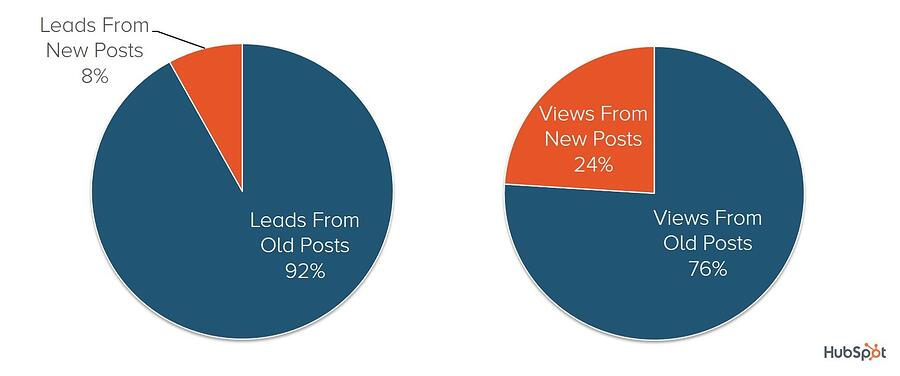
Despite this, the trend for most content marketing teams is to focus on producing vast amounts of new content. While this definitely brings results and should be done, neglecting old content just undermines your long-running success and the value of your efforts.
“The value in a blog post isn’t the few thousand visitors you get right away, it’s the tens or hundreds of thousands of visitors that you get over the next few years from search results.
When I look at the traffic stats of any of my blogs, the vast majority of traffic each month goes to old posts. They’ve been shared more over time, have attracted more links and attract a lot of organic search traffic.”
~ Neil Patel, Co-Founder at Neil Patel Digital
I’m sharing this screenshot below so that you grasp the potential of what can happen within 6 months after you refresh old blog content on your website.
Let’s analyze Zapier's past track record and see the organic traffic increase [estimative results] of their website after updating 21 blog posts.
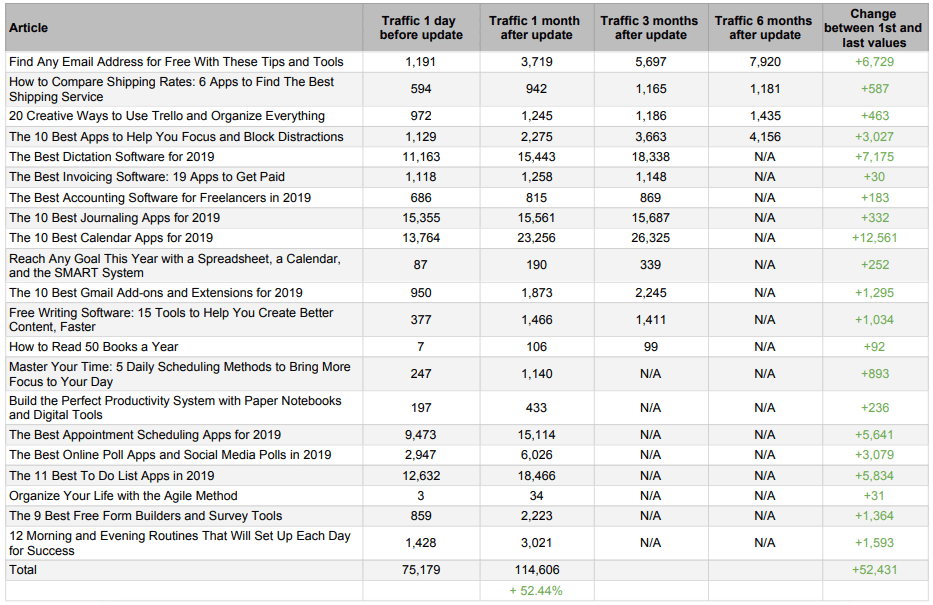
(Source: Zapier 21 updated blog posts case study by Jessica Greene)
Not sure if these Ahrefs reported ranking results are legit?
Read what SEO Strategist at Help Scout, Jessica Greene, who wrote the article above, says about it:
“A few studies have measured the accuracy of Ahrefs organic traffic volumes.
This one from Screaming Frog found that Ahrefs tended to underestimate traffic by 17% on average.
These two smaller studies found the same thing: traffic displayed in Ahrefs was lower than actual organic traffic volumes.
So it’s possible that the real traffic values for these Zapier posts are even higher than what’s shown above.
The likely reason for organic traffic being underestimated is that while Ahrefs has nearly 8 billion keywords in its database, it doesn’t track all keywords.
So it’s likely that a page can rank for keywords that Ahrefs doesn’t track—keywords that drive additional traffic to the page and site.”
Think about refreshing old blog content as planting a seed (your article) in your garden (your blog). Planting more seeds will result in a bigger garden with more trees, fruits, and vegetables.
However, if you don’t water the seeds and you forget to weed your garden, what do you think the quality of the end products will be? Planting a significant number of seeds like a crazy person isn’t going to change anything.
People will naturally avoid your garden if you don’t take care of it. Above all, nobody likes to consume old, rotten fruits and vegetables. The same applies to outdated content.
[Turn Your BLOG Into Your #1 Revenue Machine! Find How!]
To illustrate this point even better, let’s take a look at the following data.
There are 4 main reasons why you should update your blog posts immediately and see a long-term ROI on your SEO & Marketing effort
For SaaS and marketing agencies, SEO blogging and content marketing is a fierce, bloody battle. Sneeze and lose. You either move fast and implement these blog content revamping hacks, or your competition will.
Don’t think twice! Your competitors are starving for about the same rankings, traffic and leads as you are; and they will do whatever it takes to out-rank and out-smart your content, and direct leads to their website instead!
Revamp your old blog content, and leverage these 4 core advantages before the entire industry finds out:
#1 - Build reader loyalty and brand trust
Imagine that visitors land on your outdated blog or social media posts. This will most probably be the case if you haven’t set any rules for regular content updating and upgrading.
Even if your publications contain valuable information, if it is not up to date, people will inevitably go somewhere else to find the most relevant and freshest content. This means you are losing potential leads and customers.
You should strive to supply your readers with highly engaging content that helps them to solve a particular issue or to answer a troubling question they may have. This way you position yourself as an authority.
Therefore, it will be natural for people to rely on you regarding the latest trends in your industry. Consequently, you will build loyalty and attract more returning customers, which lies at the heart of the long-term success of your business.
Here is what Brenda S. Stoltz of Ariad Partners has to say about the customer-centered content approach:
“Site owners must always keep their audience and their needs at the forefront of everything they do. You need to answer your visitors’ questions and make it easy for them to find their answers and navigate your site.”
“Times are changing though and a quick Google search will show you that Google heavily favors content that directly answers questions. Therefore, your content needs to shift to providing in-depth answers to your visitors’ questions. This will help both your site visitors and growing your traffic.”
Of course, you can’t provide quality content that addresses the pain points and concerns of your potential clients if you have outdated information throughout your content channels.
[Turn Your BLOG Into Your #1 Revenue Machine! Find How!]
So pay close attention to this. Next in the list is:
#2 - Rank your website at the top of search engine results and gain the unfair competitive advantageAmit Singhal, a former Google fellow explained how:
“ Search results, like warm cookies right out of the oven or cool refreshing fruit on a hot summer’s day, are best when they’re fresh. Even if you don’t specify it in your search, you probably want search results that are relevant and recent.’’
“ If I search for [olympics], I probably want information about next summer’s upcoming Olympics, not the 1900 Summer Olympics’’
“ There are plenty of cases where results that are a few years old might still be useful for you. [fast tomato sauce recipe] certainly saved me after a call from my wife reminded me I had volunteered to make dinner!’’
“ On the other hand, when I search for the [49ers score], a result that is a week old might be too old. Different searches have different freshness needs’’
Google scrutinizes all your content pages for ’’freshness,’’ and ranks each page according to the type of search query. Ranking above your competitors for the same search can be turned into a critical competitive advantage.
Take a look at this search example:

This was the top result except for a featured snippet article for this search. What is my point? I opened the link. That is my point:

The top result is actually an update and not a new post!
[Turn Your BLOG Into Your #1 Revenue Machine! Find How!]
#3 - Grow your back-links portfolio & attract high-quality link mentions to your blogStaying up to date helps you to remain relevant to your audience and the latest industry insights. Ensure that the backlinks on your website are either evergreen or up-to-date.
Moreover, even if the information in your links seems fundamental, try to develop the idea even further with recent updates if possible. You will be rewarded not only by your visitors, but by Google as well.
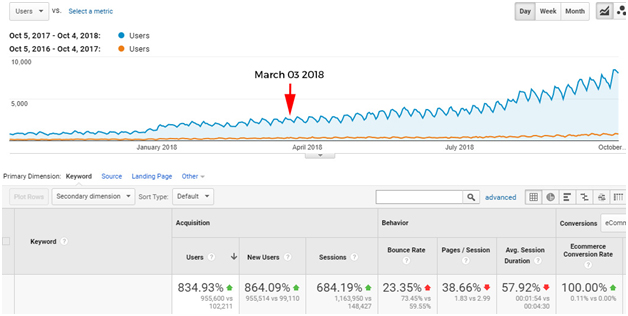
This case study of SureOak shows the result of an excellent backlinking strategy. They increased the total value of quality backlinks pointing to their client’s website by 51%.
Consequently, this resulted in a 161% organic traffic growth, while the monthly visits almost tripled from 66,310 to 173,346 a month.
You can do a backlink check of a website in your industry using free tools, such as monitorbacklinks. After you find relevant posts, reach out to the website owners and offer your blog post as up-to-date information.
In this way you can drive tons of traffic to your website. Furthermore, you can replace links provided by your competitors that provide outdated information and redirect their traffic. Website owners will be glad that you updated them with recent information and will happily link back to your page.
#4 - Stay up to date with the latest content marketing and SEO best practices
What Lukasz Zelezny, a UK based SEO consultant with 15 years of experience, has to say in his article “Business Intelligence Tools for Marketing” is eloquent enough.
“Regardless of the industry you represent, a proper analysis and constant optimization should be one of the basic and, above all, obligatory elements of the whole strategy.”
Here is what Catfish Comstock, director of SEO for Business online, thinks about that:
“Search engine optimization remains an important part of the digital marketing landscape, and the path to long term success is relatively the same as it has always been.”
“SEO is going to be here for the foreseeable future because it still produces an excellent ROI and improves user experience.”
Still not convinced refreshing blog posts is worth your time and effort?
“If you look at the number of republished posts on the blog in Ahrefs’ Content Explorer, you’ll see that we’ve republished 75 of our 200+ posts at least once.” ~ Joshua Hardwick.
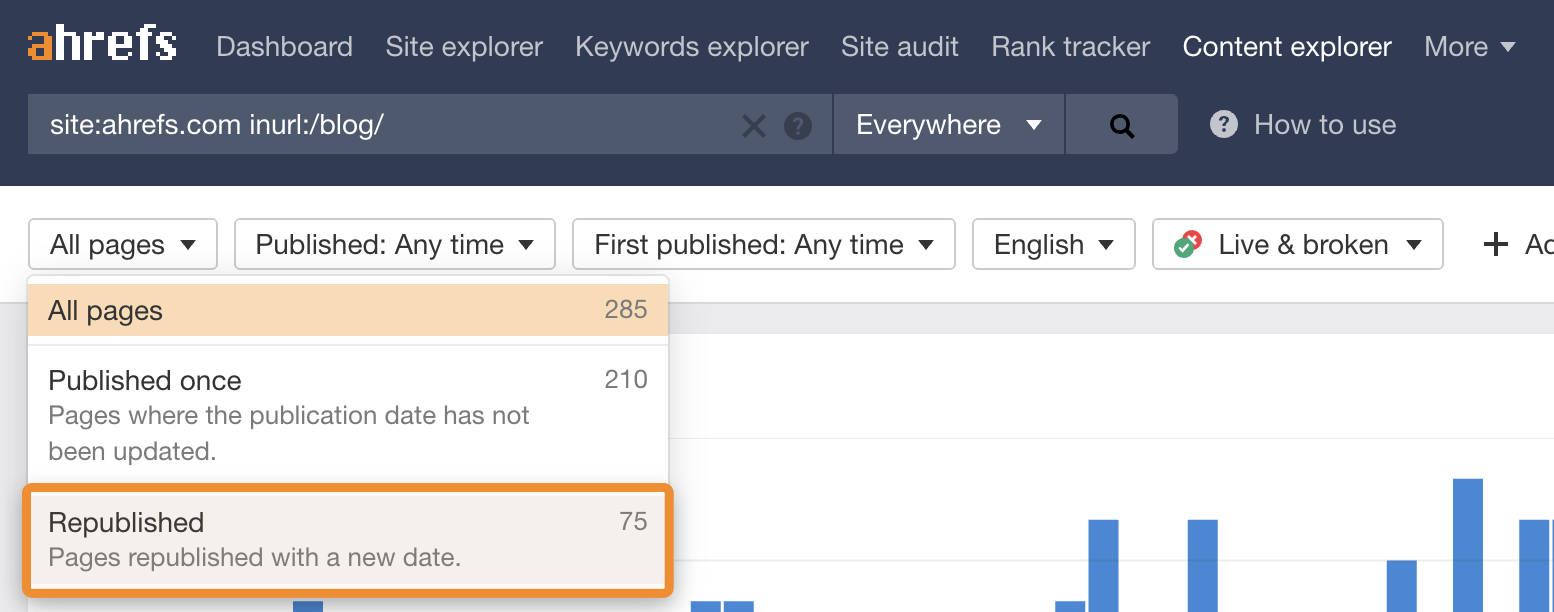
He says: “Since 2015, we’ve grown the Ahrefs Blog from zero to over 600,000 monthly search visits. What’s our secret? Consistency.”
Which Posts Should You Revise, Revamp and Republish?
With a better understanding of why we should update our content regularly, it’s time to discuss which content pages should be enhanced.
Joe Fylan, an expert freelance blogger, provides some excellent ideas for this.
Most importantly, he says that you should obviously optimize the posts that are bringing the highest amounts of traffic.
“These posts are the most likely ones your competitors will seek to imitate; the more great content you can add to them and the more up to date you can keep them, the further you will be ahead of the game.”
Next up are seasonal blog posts, which generally need to be revised more frequently.
And, last but not least, Joe mentions posts that have a good amount of shares.
“ These posts obviously performed well in the past; a little tweaking and updating may be all it takes to launch the next wave of social shares (and traffic!). You can use a tool like Buzzsumo to discover your most shared content from the past year.’’
Creating a schedule with reminders regarding your content updates can be helpful.
Ideally, you should separate your content, based on its life cycle. Some pieces will need to be updated more often than others, so give them the attention they deserve.
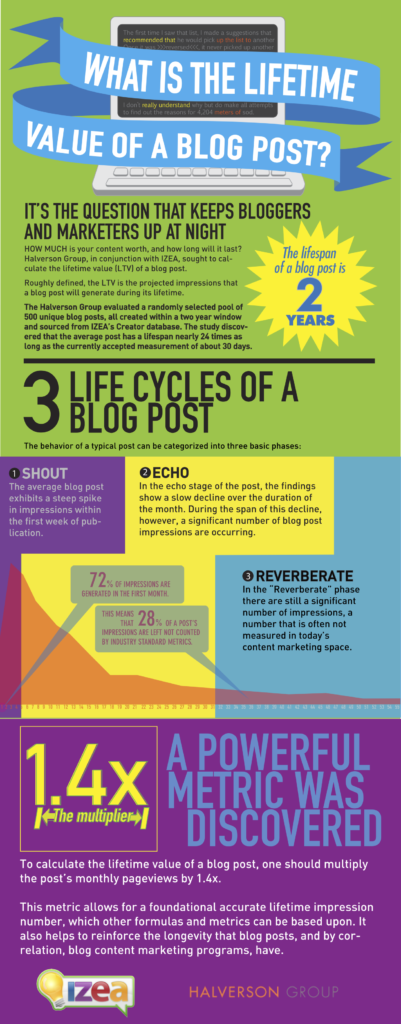
Now that we know the “why,” we should regularly update our content. To determine which posts deserve our attention, let’s consider the ’’how’’ of the matter.
Next, let’s examine the best 14 blog post update tips (aka blog revamping hacks) everyone should follow when reviving their blog content - not just SaaS and marketing agencies looking to elevate their marketing and scale SEO.
14 Blog Post Revamping Hacks You Need to Try ASAP:
#1. Update the Heading Tag with the Current Year
The h1 is an HTML tag that indicates a heading on a website. Here is what the famous Neil Patel has to say about h1 tags:
’’H1s have always been a major ranking factor. There have been plenty of trends in SEO that have come and gone, but h1s have never lost their significance.’’
He adds:
“ How users interact with your page has a lot to do with how your page will rank. And the h1 is one of the most important elements on your page that influences their interaction.’’
“ Why? Because it’s noticeable. It sends a message. It communicates a sentiment. It makes a promise. Your h1 should speak to the user in an overt way!’’
So imagine users reading your heading tag, just to discover that the advice you are giving on your tutorial is from 2015.
Or even worse, your article subject represents a trend long gone from 2016.
#2. Optimize Your Meta Tags
to Receive Higher Click-Through Rates
Your webpage meta tag is the content descriptor that helps search engines to determine what your post or site is about. It is not surprising that having bad meta tags could ruin your page ranking.
In a recent case study, Elise Dopson, a B2B freelance writer, shared her experience on this.
“ I set out to test whether meta titles and descriptions actually made an impact on how well my blog posts performed in SERPs. Why meta titles and descriptions?”
“Simple–and quite boring–answer: It’s something I’d never tested before, nor seen any good case studies around the impact it had.’’
Her results emphasize the importance of optimizing a meta tag.
Within a month she was able to:
- Increase search traffic by 54%
- Grow impressions by 57%
- Increase her average ranking position by 10 places.
She is now happy because... I quote:
“My newly-optimized meta tags now show people who’re searching for relevant search terms that my blog post is relevant.’’
#3. Audit and Target New Keywords to Boost Ranking
Patrick Coombe the Co-founder of Elite strategies recommends the following:“My recommendation is to do a full content audit, particularly on websites with 500+ posts or pages. It doesn’t take lots of advanced tools, Google Analytics will do just fine.’’
Daniel S, the founder of MediaDigi.com says the following about content auditing:
“ I’d do a content audit and check the keywords you are targeting and which content underperforms. Rewrite that content by adding valuable information. Also, pay attention to titles and meta description.”
“ CTR is a very important ranking factor so make sure you write engaging titles and descriptions that will make users choose your site from other search results.’’
Esteban Pau, a self-employed entrepreneur expands on this:
“ Well, it all starts with the right Keyword research and using the right tool. I learned that investing a bit of money in the beginning can avoid a lot of headaches and speed up the process massively when using the right tools.”
“Once you got that sorted don’t stuff your articles with the keywords hoping to rank for the first page, use it in the H1 header and subheaders. If possible sprinkle it in your text one or two more times.”
As you can see, the importance of keyword research is significant. So, don’t ignore the changes occurring in your niche keyword environment. A keyword audit is an essential part of updating old blog posts.
However, you should focus on generic keyword research only. Try to do extensive long-tail keyword research. Why? The following graphic will help you understand.
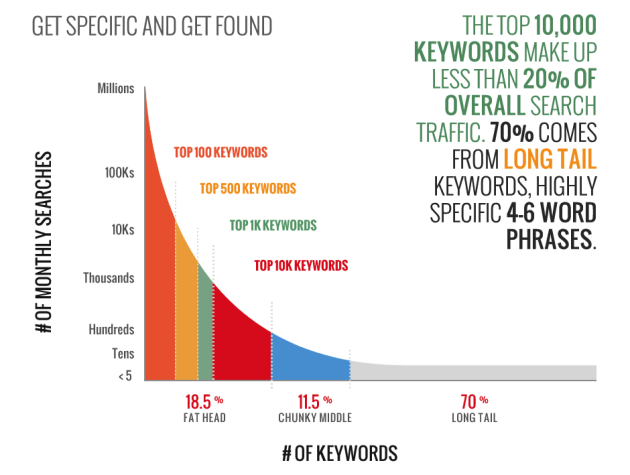
There have been many changes over the last 5 years concerning this topic.Titles that include the current year will indicate to both your audience and Google that your content was recently updated. You will be rewarded with a higher ranking and click-through rate.
Here is what Julia McCoy, CEO at Express Writers, can teach you:
“Mobile voice search (Siri) and smart devices (Google Home, Alexa) in our homes are changing the way our audience searches on Google. This is a huge factor to consider when researching keywords in tools like KWFinder or SEMrush (my favorite tools).”
“Longer-tail keywords and even an entire question (sometimes 5-8 words!) are our new keyword phrases to work with. If you don’t find data on a long-tail keyword, search it in Google.”
She also adds:
“Match your keywords and SEO usage to the way people are searching today and in the future!”
What are the most important words in the last sentence? Today and in the future.
Not what people were searching for in the past!
[Turn Your BLOG Into Your #1 Revenue Machine! Find How!]
Ubersuggest by Neil Patel is an amazing free keyword tool that can find hundreds of new long-tail keywords in only a few minutes. Other software are also available for this purpose, such as Wordtracker Scout and WordStream Free Keyword Tool.
#4. Answer Frequently Asked Questions to Ignite People’s Interest
Providing added value for existing and potential customers is always a winning strategy. By searching for the questions most often asked by people and answering them adequately, you are placing yourself in a fantastically advantageous position.
Here is what Ann Handley from MarketingProfs has to say:
“My general SEO advice is: Create user-centric content that answers the questions your prospects have, and that makes them feel like you understand their problems, shoulder their burdens along with them, and feel their pain.”
You should stay up-to-date with the questions and concerns of people, since they tend to change over time. Adapting your content to this, can turn an old blog post into a value-generating machine.
#5. Align With Search Intent for Recognition
More and more people are learning about the importance of aligning the entirety of their content with search intent.
Dominic Wells, Founder of Human Proof Designs, comments on this:
“I feel the truth that is most important right now is how Google is fundamentally changing in one direction, and everybody is looking in the other direction.”
“Google is much better at understanding the intent behind searches now, and is also able to test different results based on different potential intents.”
Steven van Vessum, VP of Community at ContentKing, also commented on the changes in Google’s algorithm towards search intent:
“It makes total sense, and aligns with what I’ve seen in the sites that I’m managing the SEO for and other SEO experts have confirmed seeing the same thing. Of course, I asked them to back it up with data 
Checking our guide on Search Intent can help you gain a better understanding of the topic.
#6. Rewrite Your Titles and Introductions
Your title and introduction are the first impression you provide your audience. Your number one priority is giving the reader a reason to engage with your article.
Here are some strategies that you can use to revamp your introductions, and make them highly engaging.
1. Start with a relevant and compelling question to evoke curiosity
Try to identify the main pain points and questions of your target audience. I’m a big fan of a copywriting formula called: PAS (problem-agitate-solve), that you should use as well.
2. Start with legit, data-driven facts
Back up your statements with numbers. Include legit sources with strong authority. This blog post is an overall proof in itself, and the reason why data-driven content is paramount to your blog’s success.
3. Establish an interesting and relevant analogy.
Try to engage all the human senses. If you make the reader feel what you are talking about, you are well on your way to creating captivating content. Stir your audience’s imagination and invoke their mind’s eye.
Titles shouldn’t be neglected either. Update your title, if necessary, to make it more compelling and eye-catching.
[Turn Your BLOG Into Your #1 Revenue Machine! Find How!]
Here is an opinion on titles from Corey Wainwright, The Director of Content at HubSpot:
“ Titles are what sell the content. They represent it in search engines, in email, and on social media. It's no surprise, then, that some of the most common questions we get concern crafting titles.”
Furthermore, she tells us:
“ There is no one-size-fits-all answer to how long or short your title should be. It depends what your goals are, and where your headline will appear.’’
“According to our own analysis at HubSpot, headlines between 8–12 words in length got the most Twitter shares on average. As for Facebook, headlines with either 12 or 14 words received the most Likes.”
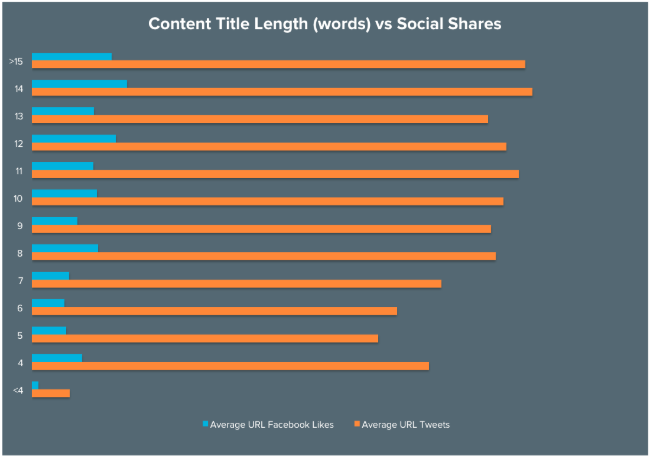
#7. Recycle and Combine Under-Performing Content
It is not mandatory to get rid of blog posts that aren’t performing as well as expected.
Will Henry provides us with a useful tip for re-publishing our old blogs:
“ You don’t always have to keep your articles the same if you republish them. In fact, you can get a lot of SEO benefits out of consolidating multiple articles into a single post as long as it is relevant.’’
“ Just like Google loves new content, Google also loves long content. On average, longer articles tend to rank higher on Google than shorter content.”

“ The main obstacle that many businesses face is the actual creation of long-form blog posts. But, you can easily take two separate blogs and create a post with 1500-2000+ words with little effort on your end.”
“Since most of the work has already been done, all you’ll need to do is format it correctly so that it sounds natural.”
#8. Use Internal Linking for Optimization and to Achieve Better Exposure
You can optimize your old content by building stronger internal links. Creating links that run back and forth from your well-performing content to the information not doing too well, can be essential to the overall success of your publishings.
Shaun Anderson, the Head of SEO at MBSA Marketing Ltd. and owner of www.hobo-web.co.uk, has over 20 years of industry experience and shares some insights:
“Traditionally, one of the most important things you could do on a website to highlight your important content was to link to important pages often, especially from important pages on your site (like the homepage, for instance).”
“Highlighting important pages in your site structure has always been important to Google from a CRAWLING, INDEXING and RANKING point of view. It is also important for website users from a USABILITY, USER EXPERIENCE and CONVERSION RATE perspective”
#9. Remove Broken Links From Your Post
It is easy to forget about the links to studies, other posts, materials, etc. once you’ve published a blog post. However, this can reduce both your readers’ experience and your site quality when search engines check your post for quality and ranking purposes.
William Craig, President of WebFX, Inc., helps to further prove my point:
“What do you do when you happily surf the web and suddenly come across a 404 error? For most of us, the immediate response would be to simply leave the current site in favor of another one because both people and search engines consider broken links as unprofessional.”
“404 errors and broken links also have negative effects on your search engine rankings so it is quite reasonable to be proactive in avoiding them to improve exposure and increase site traffic.”
He continues:
“The best way to detect these errors is by using Google Webmaster Tools. If you haven’t done so already, register your site there. It’s an essential tool to have for anyone running a website.”
“One of the most important tools provided in GWT is the Remove URL tool, which allows you to remove invalid pages from Google search results.”
#10. Include New Material, Reference Links and Studies When Re-Publishing
I’m a big fan of this. And that’s one key element we look at when rewriting existing blog posts or ghost writing content from scratch, for our clients.
Writing top premium, high-performing, high-quality content, at the most affordable cost for clients who value Long-term ROI is my USP.
Onto this note, each blog post I craft is a minimum 2,000+ words and features 8 core elements:
- Laser-Targeted Keywords for different client avatars / buyers journey (Tofu-Mofu-Bofu)
- Key story-telling angles & overlooked copywriting concepts
- Professional-looking, 3rd party graphics, charts & illustrations
- Relevant sources (primarily & secondary)
- Expert quotes (original & curated)
- Inner links to your website pages/blog posts/lead magnets
- 3rd party, outbound authority links, and industry statistics.
There isn’t a greater annoyance for readers than an outdated source of information or a data report that isn’t up-to-date. This is especially true if numbers are crucial in discussing the subject, and this is very often the case.
[Turn Your BLOG Into Your #1 Revenue Machine! Find How!]
Tony DeGennaro, the Director Of Marketing And Business Development at Dragon Social Ltd., is in the habit of keeping his content rich with up-to-date information and material.
“I take great pride in my content and want to make sure all my statistics, figures, and information is as up to date as possible. Each piece of content is a living document that needs to be nurtured and grown over time.”
“Every time I see information that’s missing from one of my articles or new statistics that have been released I quickly go back to my articles and add it in. Sometimes it’s just a sentence or two, but it can be very effective for keeping your content relevant.”
#11. Enhance the Formatting Of Old Posts
The layout of your articles is vital. What Sarah Klongerbo, a creative content strategist, says will help us find out why.
“Online, it’s even more important to make your content skimmable. People have far less patience on digital devices than they do with physical reading materials, and they have many more distractions.”
Some common tips include, using more headings and subheadings, constraining your column width, breaking up your paragraphs in short sentences, and various other factors.
By now you’re convinced that this blog post is an example in itself of the power of formatting, and understand why making content easy to consume respects your readers’ time, earns their trust, and makes them want to come back for more.
#12. Insert Videos and Images Because Users LOVE Them
A must-have for any blog post that is considered engaging, are relevant images and videos.
Adding these elements to your existing blog post, can sometimes be more powerful than having them from the beginning.
Nevertheless, bear in mind that both search engines and users love this type of content.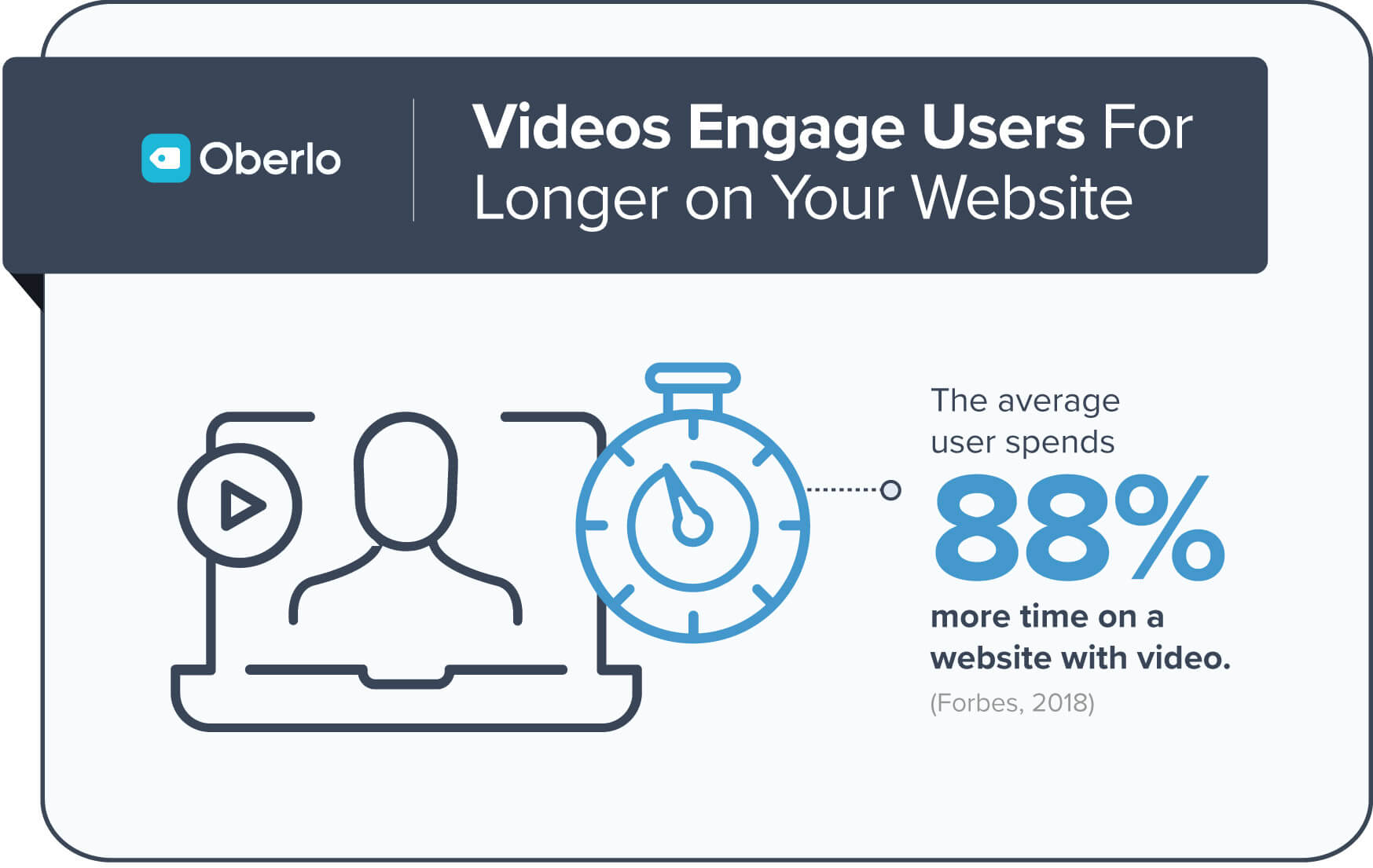
#13. Change the Alt Tag Text Of Your Images
Do you think that alt tags aren’t important? Think twice! Here is what John Mueller, the Senior Webmaster Trends Analyst at Google, has to say about alt tags:
“Yes… so the alt text is essentially shown when the images are turned off in most browsers so that’s something that we would count as part of the on-page text”
“Alt attribute should be used to describe the image. So if you have an image of a big blue pineapple chair you should use the alt tag that best describes it, which is alt=”big blue pineapple chair.” title attribute should be used when the image is a hyperlink to a specific page.”
Good alt text should be descriptive but avoid keyword stuffing, since this is not good in the eyes of Google.
#14. Add Expert Quotes to Build Authority and Trust
Just take this article as an example. It has expert quotes from numerous specialists, making the content highly engaging and at the same time - authoritative.
This is what Lola Michels, a Content Strategist at Passion Digital, has to say about increasing Expertise, Authority, and Trust, more popularly known as “E-A-T”:
“If you are an expert in your field – which, if you’re running a successful business, you most likely are – you need to make sure to translate your real-world credentials to the online world.”
Common ways to increase E-A-T signals include:
- Ensuring your Website is secure (has an SSL certificate)
- Investing in customer reviews- Working with established journalists/writers
- Showing off your credentials (awards, certificates)
- Make it easy for customers to reach out (phone call, live chat)
Now that you have the 14 essential tips, you may think you are good to go.
Not so fast…
If you make these 3 common mistakes when revising old blog posts, it can be detrimental to the entire process.
3 common mistakes to AVOID
when revising old blog posts
1. Stop Wasting Your Time on Content that Doesn’t Need Updating
You have to be certain that the piece of content truly needs to be revamped.
Just because some time has passed doesn’t mean that it is necessary to revise a post.
Remember, in the beginning we mentioned that you should create a schedule for your content updates? This is the main reason you need it. Therefore, you won’t waste time on pointless updates that are more likely to do harm instead of help.
2. Avoid Changing Your URL Unless it is a Necessity
It may sound like a good idea to change the web address (URL) of your post.
However, you should keep certain things in mind. John Lincoln, the CEO of Ignite Visibility, shares some reasons why you should avoid changing your URL.
“No matter the reason for wanting to change a URL, it will likely result in a drop in traffic while Google indexes the changes, even when performed correctly. “
“URLs are the lifeblood of SEO. Even one broken link can wreak havoc on your website. You should only change URLs when it’s 100% necessary. Ask yourself whether or not you’re ready to experience an estimated 25% loss in your traffic while you wait for redirects to properly kick in.”
So, you should keep this in mind if you consider changing the URL of your best performing posts. You can read the full article for more information on how to handle this sensitive matter.
3. Don’t Make Too Many Radical Changes at Once
Changing everything at once is not a good idea, especially if your post is getting some attention. Making amendments doesn’t mean the blog post should become an entirely new creation.
Moreover, if you are not careful, you might replace certain keywords and other factors that are already working in your favor.
Here is the opinion of Pamela Vaughan, the principal marketer on HubSpot's web strategy team:
“If you feel compelled to update the post's title, try to avoid changing it drastically from the original. While the URL is more important to keep the same than the title, if you really need to change the title, do your best to keep your keywords in there.”
BONUS Tips:
Check Heading Tags SEO

Source: Seobility.net
Peter Thaleikis @ RankLetter says...
"I check the strongest articles regularly in Google Search Console. When I notice the traffic is slipping away slowly that is a sign the article is getting outdated. To avoid jumping into action too quickly, I put the page on my mental "keep a closer look" list.
If the changes persist I check the keywords closer to see if it's particular keywords that dropped or the page overall. In either case, I try to identify the keywords most likely to drive traffic from an increase in positions.
That's usually from the end of the first page to the second page (average position 6-20). I look if there are particular angles for these that my article isn't covering. If so, I will add a section for these.
Otherwise, I will ensure the article mentions it in the title (if possible), has got an h2 for the topic, and in the paragraph below contains the key + at least one image with the URL + alt-tag with the keyword. These steps often help to recover the rankings for particular keywords. While this sounds like a lot of work it becomes quite a routine and isn't taking away too much time."
So, now you are prepared to turn your old blog posts
into lead generating machines and paid/trial users
Congratulations on making it this far! You now have the essential knowledge to make your old blog posts rise from the ashes. Following the 14 best practices we’ve shared, while avoiding the top 3 mistakes, will lead you on your path to success.
Ignoring your old blog posts is like not giving a child the attention and love it deserves. Don’t make this mistake. Set aside some time to polish your old content.
Trust me, you’ll be rewarded for your efforts.
[Turn Your BLOG Into Your #1 Revenue Machine! Find How!]
SaaS brands, marketing agencies & content teams looking to skyrocket 
